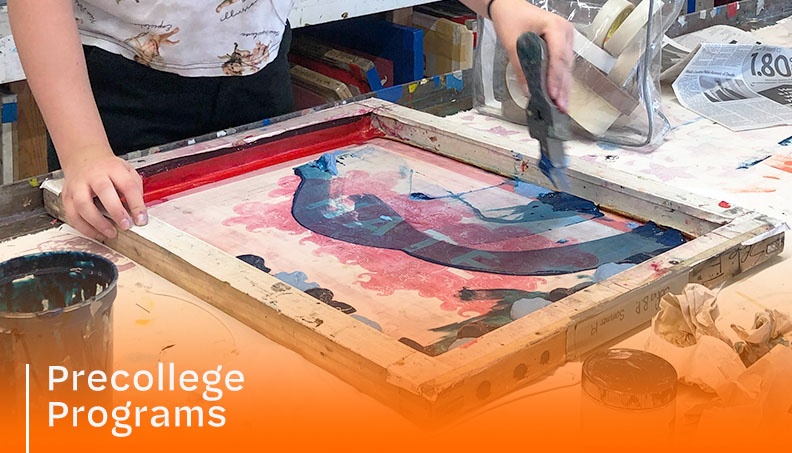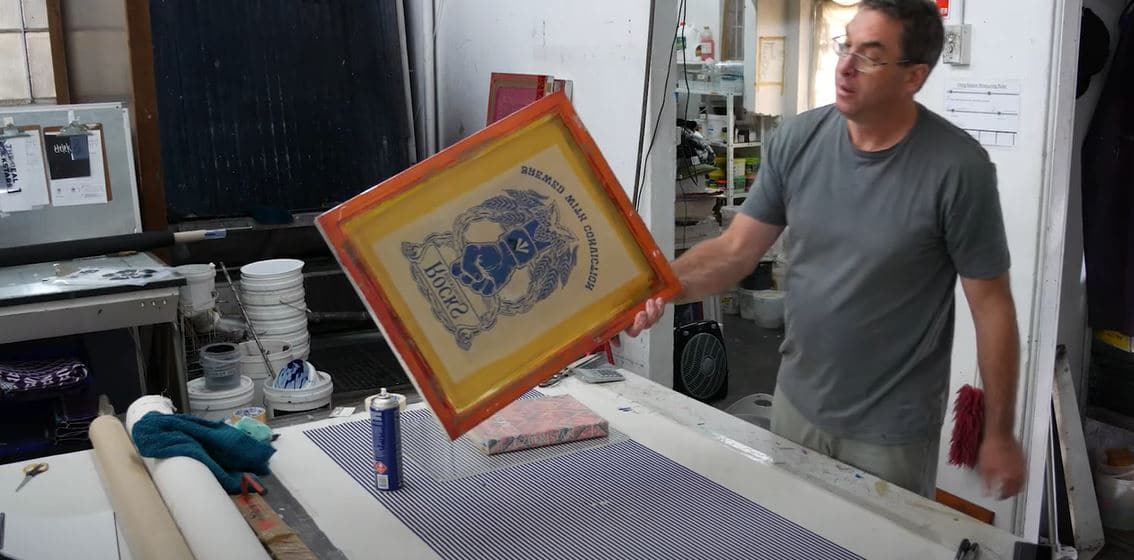The Important Guide to Comprehending Screen Printing and Its Versatile Utilizes
Screen printing has an abundant background that dates back to ancient times, developing into an advanced technique utilized throughout numerous industries today. This guide explores the ins and outs of the screen printing procedure, outlining its applications in fashion, home, and marketing décor - 10:9 Design LLC Company. Comprehending these fundamentals can open creative potential for both creative and commercial tasks. The adhering to sections will disclose necessary ideas and techniques to enhance one's screen printing undertakings
The Background of Screen Printing
Although screen printing has roots that map back centuries, its advancement shows the artistic and technological advancements of numerous cultures. Originating in ancient China, the strategy was at first made use of for embellishing fabrics and later spread to Japan, where it became important to Ukiyo-e woodblock printing. The method moved to Europe in the 18th century, where it gained appeal among craftsmens and commercial printers. The invention of photo emulsion in the 20th century transformed screen printing, permitting even more elaborate layouts and greater performance. Artists like Andy Warhol better moved its appeal, making use of the medium to produce legendary jobs that mixed commercialism and fine art. By the late 20th century, screen printing had developed itself as a flexible strategy, employed in vogue, advertising, and art. Today, it proceeds to advance, integrating digital modern technology and expanding its applications throughout different markets.
The Screen Printing Refine Explained
Screen printing changes artistic visions into concrete layouts through a series of exact actions. A picture is produced and then transferred onto a screen, usually made of great mesh textile stretched over a framework. A light-sensitive solution is related to the screen, which is exposed to light, solidifying in locations not covered by the picture. After rinsing the unhardened emulsion, a pattern is created.
Next, the screen is placed over the substrate, whether it be fabric, paper, or another product. Ink is after that pushed with the open areas of the stencil using a squeegee, transferring the layout onto the substratum below. This process can be repeated for numerous colors, calling for different displays for every shade. Finally, the printed item is healed utilizing warm to guarantee the ink sticks effectively, causing a long lasting, lively style on-line.
Sorts Of Screen Printing Techniques

Furthermore, specialty methods, such as discharge screen printing, eliminate color from the material to produce softer prints, while foil screen printing applies metal aluminum foil to attain a glossy surface (10:9 Design reviews). Each strategy supplies distinctive features, providing to numerous imaginative demands and manufacturing ranges, ultimately broadening the opportunities within the screen printing domain
Applications of Screen Printing in Various Industries

Additionally, the signs and advertising and marketing markets use screen printing for creating appealing displays and banners. This method enables strong colors and elaborate designs that catch attention. In electronic devices, screen printing is utilized for using conductive inks to motherboard, essential for part connections. Furthermore, the home design industry welcomes screen printing to create distinct styles on fabrics and wall art. Generally, screen printing functions as a crucial device across varied fields, boosting products with customized and aesthetically enticing graphics.
Tips for Successful Screen Printing Projects
While undertaking a screen printing job, careful interest to information can considerably boost the final end result. First, choosing high-quality products is essential; this includes the screen, inks, and substratums. Using proper mesh counts can impact ink deposition and information resolution. Preparation is similarly important; extensive cleansing of screens and appropriate direct exposure times assure crisp prints.
Next, precise enrollment is vital for multi-color prints. Making use of alignment tools can assist attain specific layering. Furthermore, screening prints on scrap products before production assists determine possible problems without throwing away sources.

Frequently Asked Concerns
What Materials Are Ideal for Screen Printing on Textile?
Cotton and polyester blends are optimal for screen printing on textile because of website their durability and ink absorption. Furthermore, specialty materials like silk or canvas can produce distinct appearances and coatings, boosting the total layout quality.
Exactly how Do I Tidy and Maintain Screen Printing Tools?
To cleanse and maintain screen printing tools, one ought to consistently wash screens with proper solvents, inspect squeegees for wear, oil moving components, and store all items in a dry, dust-free atmosphere to lengthen their lifespan.
What Are the Environmental Impacts of Screen Printing?
Screen printing can have significant environmental impacts, including chemical waste from solvents and inks, water use throughout cleansing procedures, and power intake. Eco-friendly materials and sustainable practices are necessary for minimizing these negative effects.
Can Screen Printing Be Done in the house Properly?
Screen printing can be efficiently done at home with the ideal products and methods. Enthusiasts can develop high quality prints, though success depends upon their skill level, equipment, and understanding of the procedure included.
What Are the Expenses Connected With Starting a Display Printing Organization?

Starting a screen printing organization includes costs for tools, materials, and work area. Preliminary expenses typically vary from a few hundred to numerous thousand dollars, depending on the range, top quality of machinery, and desired manufacturing capacity.
Screen printing has an abundant history that dates back to old times, developing right into an advanced strategy utilized throughout different markets today. An additional technique, rotary screen printing, utilizes round displays, helping with continual printing on material rolls, thereby improving effectiveness for large-scale manufacturings. In addition, specialty techniques, such as discharge screen printing, eliminate color from the fabric to produce softer prints, while aluminum foil screen printing applies metal aluminum foil to accomplish a glossy finish. In the fashion field, screen printing is commonly utilized to develop dynamic layouts on apparel, allowing brands to display their one-of-a-kind designs. Cotton and polyester blends are optimal for screen printing on textile due to their resilience and ink absorption.